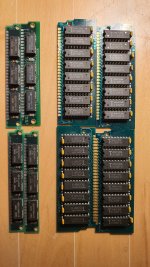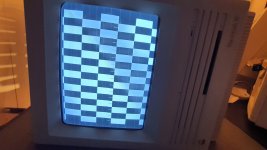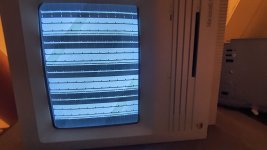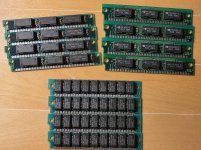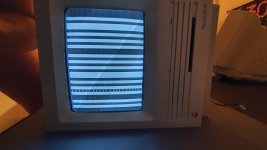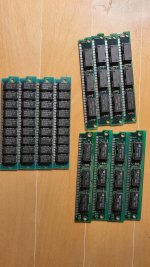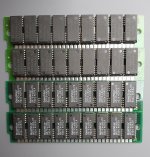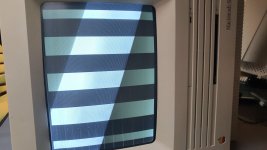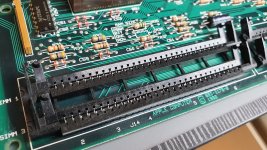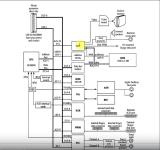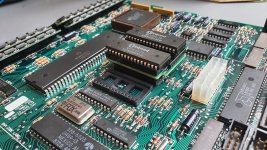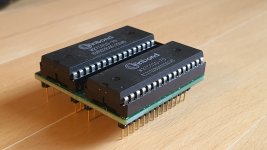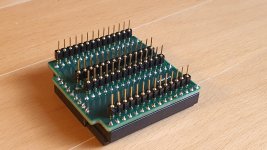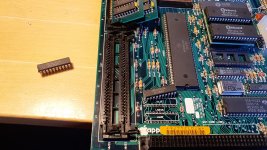Dallas_Green
Experienced Member
Hello community
I just got this little beauty, the SE for my little collection and after some contact cleaning of the RAM modules and a little startup help to the old SCSI HDD it relay did get working again. Its prepossesor already cutted out the CMOS battery a while ago so that I was kinda happy not having any acid damage on the logic board found. So far so good.
Then I just put everything back together and wanted to let it boot again to see whether everything was connected as it should. Everything fine, it loaded until the desktop and then, a wired sound appeard and a feeling like unstable current I thought, o lord - the ac cable wasn't plugged in properly but this wasn't the case. I switched it off and on again, having another try but it didn't boot anymore. It just showed the mosaic image on the crt but without any message and some strange noises on the speaker.
Then I saw what relay must have happened. One of the last screws laid under the mac, directly in contact with the logic board and its expansion slot. Guess it shorted some of the contacts of the connector and blew up some of its logic.
I'm so frustrated. It was almost working fine again and then, just because of a little headlessness I fried the whole logic board. Now it's not showing anything on the screen but the mosaic. No message, no beep. The speaker does make some little strange noises while powering up. It seems that it is willing to make a proper beep but can't. It sounds something weird.
Now it's not showing anything on the screen but the mosaic. No message, no beep. The speaker does make some little strange noises while powering up. It seems that it is willing to make a proper beep but can't. It sounds something weird.
Is there any chance to bring it back to life? It relay would be so sad for this logic board with it's awesome physical condition.
I checked of there are ICs overheating because I already determined broken ICs by this in other circumstances but here there are only a few chips getting warm, like the CPU and two chips next to the expansion slot
is there someone who can help me on that?
Thanks in advance,
Dallas
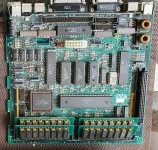
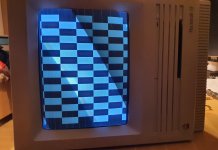
I just got this little beauty, the SE for my little collection and after some contact cleaning of the RAM modules and a little startup help to the old SCSI HDD it relay did get working again. Its prepossesor already cutted out the CMOS battery a while ago so that I was kinda happy not having any acid damage on the logic board found. So far so good.
Then I just put everything back together and wanted to let it boot again to see whether everything was connected as it should. Everything fine, it loaded until the desktop and then, a wired sound appeard and a feeling like unstable current I thought, o lord - the ac cable wasn't plugged in properly but this wasn't the case. I switched it off and on again, having another try but it didn't boot anymore. It just showed the mosaic image on the crt but without any message and some strange noises on the speaker.
Then I saw what relay must have happened. One of the last screws laid under the mac, directly in contact with the logic board and its expansion slot. Guess it shorted some of the contacts of the connector and blew up some of its logic.
I'm so frustrated. It was almost working fine again and then, just because of a little headlessness I fried the whole logic board.
Is there any chance to bring it back to life? It relay would be so sad for this logic board with it's awesome physical condition.
I checked of there are ICs overheating because I already determined broken ICs by this in other circumstances but here there are only a few chips getting warm, like the CPU and two chips next to the expansion slot
is there someone who can help me on that?
Thanks in advance,
Dallas




